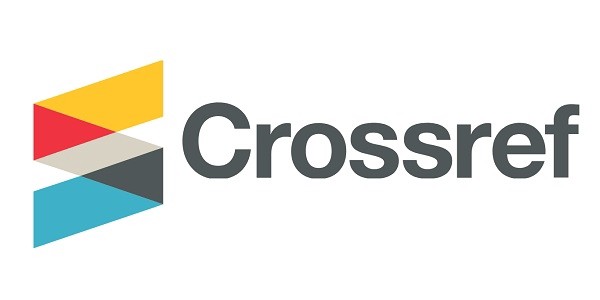Prevalência e impacto prognóstico da ascite, síndrome hepatorrenal e síndrome hepatorrenal e hiponatremia em pacientes cirróticos
DOI:
https://doi.org/10.35954/SM2018.37.1.9Palavras-chave:
Ascites; Liver Cirrhosis; Hyponatremia; Hepatorenal Syndrome, Ascites; Cirrose hepática; Hiponatremia; Síndrome HepatorrenalResumo
A cirrose representa o estágio final comum para o qual convergem diferentes doenças hepáticas crônicas. Conforme a doença progride com o desenvolvimento da hipertensão portal, surgem complicações como ascite, síndrome hepatorrenal e hiponatraemia. O desenvolvimento de qualquer uma dessas complicações marca um ponto de viragem na evolução da doença com notável impacto prognóstico. O objetivo do presente trabalho é descrever as características de uma coorte de pacientes cirróticos avançados principalmente no que diz respeito ao desenvolvimento de complicações da hipertensão portal avançada (hiponatraemia, ascite e síndrome hepatorrenal), seu impacto prognóstico e sua sobrevivência à morte ou transplante hepático. Quarenta pacientes que foram acompanhados durante 2 anos foram analisados. Com relação às complicações que foram o foco da análise, as mais freqüentes foram ascite (40%) seguidas de hiponatraemia e síndrome hepatorrenal (HRS) com 7,5% e 5% respectivamente. Embora tenha sido encontrada uma diferença entre a presença e a ausência destas complicações com uma maior necessidade de transplante hepático ou morte, ela não foi estatisticamente significativa. Este resultado é possivelmente condicionado pelo pequeno número de pacientes, e pela duração do acompanhamento do estudo. Estudos incluindo um número maior de pacientes são necessários para tirar conclusões válidas. No entanto, a presença das complicações analisadas deve alertar o médico sobre a gravidade da situação e a necessidade de encaminhamento precoce desses pacientes para avaliação em um centro de transplante hepático.
Downloads
Métricas
Referências
(1) Ginés P, Arroyo V. Cirrosis hepática. En: Farreras P, Rozman C. Medicina Interna, 17a. ed. Barcelona, Elsevier, 2012; 314-19.
(2) Sola E, Ginés P. Renal and circulatory dysfunction in cirrhosis: Current management and future perspec-tives. J Hepatol 2010; 53(6):1135-1145.
(3) Arroyo V, Ginés P, Gerbes A, Dudley F, Gentilini P, Laffi G, et al. Definition and Diagnostic Criteria of Refractory Ascites and Hepatorenal Syndrome in Cirrhosis. Hepatology 1996; 23(1):164-76.
(4) Arroyo V, Rodés J, Gutiérrez-Lizárraga M, Revert L. Prognostic value of spontaneous hyponatremia in cirrhosis with ascites. Am J Dig Dis 1976; 21(3):249-56.
(5) Ginés P, Guevara M. Hyponatremia in Cirrhosis: Pathogenesis, Clinical Significance, and Manage-ment. Hepatology 2008; 48:1002-1010.
(6) Ginés P, Berl T, Bernardi M, Bichet D, Hamon G, Jimenez W, et al. Hyponatremia in Cirrhosis: From Pathogenesis to Treatment. Hepatology 1998; 28(3):851-64.
(7)Porcel A, Diaz F, Rendón P, Macías M, Martín-Herrera L, Girón-Gonzalez J. Dilitional Hy-ponatremia in Patients with Cirrhosis and Ascities. Arch Intern Med 2002; 162(3):323-8.
(8) Borroni G, Maggi A, Sangiovanni A, Cazzaniga M, Salerno F. Clinical relevance of hyponatre-mia for the hospital outcome of cirrhotic patients. Dig Liver Dis 2000; 32(7):605-10.
(9) Angeli P, Wong F, Watson H, Ginés P, and the CAPPS Investigators. Hyponatremia in Cirrhosis: Results of a patient population survey. Hepatology 2006; 44:1535-1542.
(10) Ruf A, Kremers W, Chavez L, Descalzi V, Podesta L, Villamil F. Addition of serum sodium into the MELD score predicts waiting list mortality better than MELD alone. Liver Transpl 2005; 11(3):336-43.
(11) Biggins S, Rodriguez H, Bacchetti P, Bass N, Roberts J, Terrault N. Serum sodium predicts mortali-ty in patients listed for liver transplantation. Hepatology 2005; 41(1):32-9.
(12) Heuman D, Abou-assi S, Habib A, Williams L, Stravitz R, Sanyal A. Persistent ascites and low serum sodium identify patients with cirrhosis and low MELD scores who are at high risk for early death. Hepatology 2004; 40(4):802-10.
(13) Dawwas M, Lewsey J, Neuberger J, Gimson A. The impact of serum sodium concentration on mor-tality after liver transplantation: a cohort multicenter study. Liver Transpl 2007; 13(8):1115-24.
(14) Londoño MC, Guevara M, Rimola A, Navasa M, Taurà P, Mas A et al. Hyponatremia impairs early posttransplantation outcome in patients with cirrho-sis undergoing liver transplantation. Gastroenterology 2006; 130(4):1135-43.
(15) Guevara M, Baccaro ME, Torre A, Gómez-An-són B, Ríos J, Torres F et al. Hyponatremia is a risk factor of hepatic encephalopathy in patients with cirrhosis: a prospective study with time-dependent analysis. Am J Gastroenterol 2009; 104(6):1382-9.
(16) Runyon B, AASLD Practice Guidelines Commit-tee. Management of Adult Patients with Ascites Due to Cirrhosis: An Update. Hepatology 2009; 49(6):2087-107.
(17) Lucena M, Andrade R, Tognoni G, Hidalgo R, De La Cuesta F; Spanish Collaborative Study Group On Therapeutic Management In Liver Disease. Mul-ticenter hospital study on prescribing patterns for prophylaxis and treatment of complications of cirrho-sis. Eur J Clin Pharmacol 2002; 58(6):435-40.
(18) D’Amico G, Morabito A, Pagliaro L, Marubini E. Survival and prognostic indicators in compensated and decompensated cirrhosis. Dig Dis Sci. 1986 May;31(5):468-75.
(19) Fortune B, Cardenas A. Ascites, refractory asci-tes and hyponatremia in cirrhosis.Gastroenterology Report 2017; 5(2):104-112.
(20) Ginés A, Escorsell A, Ginés P, Saló J, Jiménez W, Inglada L. Incidence, predictive factors, and prog-nosis of the hepatorenal syndrome in cirrhosis with ascites. Gastroenterology 1993; 105(1):229-36.
(21) Salerno F, Gerbes A, Ginés P, Wong F, Arroyo V. Diagnosis, prevention and treatment of hepatorenal syndrome in cirrhosis. Gut 2007; 56(9):1310-8.
(22) Angeli P, Gines P, Wong F, et al. Diagnosis and management of acute kidney injury in patients with cirrhosis: revised consensus recommendations of the International Club of Ascites. J Hepatol 2015; 62:968-974.
(23) Orlandi F, Christensen E. A consensus confer-ence on prognostic studies in hepatology. J Hepatol 1999; 30(1):171-2.
(24) Child C, Turcotte J. Surgery and portal hyperten-sion. In: The Liver and Portal Hypertension. Child C. (Ed) Saunders, Philadelphia 1964; pág. 50.
(25) Pugh R, Murray-Lyon I, Dawson J, Pietroni M, Williams R. Transection of the oesophagus for bleed-ing oesophageal varices. Br J Surg 1973; 60:646-9.
(26) D’Amico G, Garcia-Tsao G, Pagliaro L. Natural history and prognostic indicators of survival in cirrho-sis: a systematic review of 118 studies. J Hepatol 2006; 44(1):217-31.
(27) Christensen E, Schlichting P, Fauerholdt L, Gluud C, Andersen P, Juhl E et al. Prognostic value of Child-Turcotte criteria in medically treated cirrho-sis. Hepatology 1984; 4(3):430-5.
(28) Christensen E. Prognostic models in chronic liv-er disease: validity, usefulness and future role. J Hepatol 1997; 26(6):1414-24.
(29) Malinchoc M, Kamath P, Gordon F, Peine C, Rank J, ter Borg P. A model to predict poor survival in patients undergoing transjugular intrahepatic por-tosystemic shunts. Hepatology 2000; 31(4):864-71.
(30) Kamath P, Wiesner R, Malinchoc M, Kremers W, Therneau T, Kosberg C, et al. A model to predict survival in patients with end-stage liver disease. Hepatology 2001; 33(2):464-70.
(31) Wiesner R, McDiarmid S, Kamath P, Edwards E, Malinchoc M, Kremers W, et al. MELD and PELD: application of survival models to liver allocation. Liver Transpl 2001; 7(7):567-80.
(32) Said A, Williams J, Holden J, Remington P, Gang-non R, Musat A, et al. Model for end stage liver dis-ease score predicts mortality across a broad spectrum of liver disease. J Hepatol 2004; 40(6):897-903.
(33) Freeman R, Edwards E. Liver transplant waiting time does not correlate with waiting list mortality: im-plications for liver allocation policy. Liver Transpl 2000; 6(5):543-52.
(34) Wiesner R, Edwards E, Freeman R, Harper A, Kim R, Kamath P, et al. Model for end-stage liver dis-ease (MELD) and allocation of donor livers. Gastroenterology 2003; 124(1):91-6.
(35) Freeman R, Wiesner R, Harper A, McDiarmid S, Lake J, Edwards E, et al. The new liver allocation system: moving toward evidence-based transplanta-tion policy. Liver Transpl 2002; 8(9):851-8.
(36) Ravaioli M, Grazi G, Ballardini G, Cavrini G, Er-colani G, Cescon M, et al. Liver transplantation with the Meld system: a prospective study from a single European center. Am J Transplant 2006; 6(7):1572-7.
(37) Kamath P, Kim W. Advanced Liver Disease Study Group. The model for end-stage liver disease (MELD). Hepatology 2007; 45(3):797-805.
(38) Sharma P, Schaubel D, Sima C, Merion R, Lok A. Re-weighting the model for end-stage liver dis-ease score components. Gastroenterology 2008; 135(5):1575-81.
(39) Leise M, Kim W, Kremers W, Larson J, Benson J, Therneau T. A revised model for end-stage liver disease optimizes prediction of mortality among pa-tients awaiting liver transplantation. Gastroenterology 2011; 140(7):1952-60.
(40) Saunders J, Walters J, Davies A, Paton A. A 20-year prospective study of cirrhosis. Br Med J (Clin Res Ed). 1981; 282(6260):263-6.
(41) De Franchis R. Evolving consensus in portal hypertension. Report of the Baveno IV consensus workshop on methodology of diagnosis and therapy in portal hypertension. J Hepatol 2005; 43(1):167-76.
(42) Centers for Disease Control. Deaths and hospital-izations from chronicliver disease and cirrhosis-United States, 1980-1989. JAMA 1993; 269:569-572.
(43) Lieber CS. Medical disorders of alcoholism. N Engl J Med 1995; 333:1058-1065.

Publicado
Como Citar
Edição
Seção
Licença
Até 2024, usamos a licença Creative Commons Attribution/NonCommercial Attribution 4.0 International https://creativecommons.org/licenses/by-nc/4.0/deed.es. Que estabelece que: você é livre para compartilhar, copiar e redistribuir o material em qualquer meio ou formato, e para adaptar, remixar, transformar e desenvolver o material. De acordo com os seguintes termos:
Atribuição: você deve dar o devido crédito, fornecer um link para a licença e indicar se foram feitas alterações. Você pode fazer isso de qualquer forma razoável, mas não de uma forma que sugira que você ou seu uso é endossado pelo licenciante.
Não comercial: você não pode usar o material para fins comerciais.
A partir de 2025, os autores mantêm seus direitos autorais e cedem à revista o direito de primeira publicação de seu trabalho, que estará simultaneamente sujeito à licença https://creativecommons.org/licenses/by-nc-sa/4.0/deed.es, que permite o compartilhamento, a cópia e a redistribuição do material em qualquer meio ou formato, desde que a publicação inicial nesta revista seja indicada. Adaptar, remixar, transformar e desenvolver o material. Se você remixar, transformar ou construir a partir do material, deverá distribuir sua contribuição sob a mesma licença do original e não poderá fazer uso do material para fins comerciais.
De acordo com os seguintes termos:
1. atribuição: você deve dar o devido crédito, fornecer um link para a licença e indicar se foram feitas alterações. Você pode fazer isso de qualquer maneira razoável, mas não de forma a sugerir que você ou seu uso seja endossado pelo licenciante.
2. não comercial: você não pode usar o material para fins comerciais.
3. ShareAlike: se você remixar, transformar ou desenvolver o material, deverá distribuir sua contribuição sob a mesma licença do original.
PlumX Metrics

























